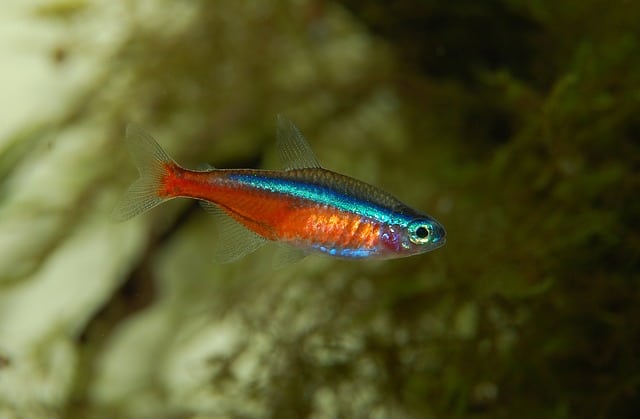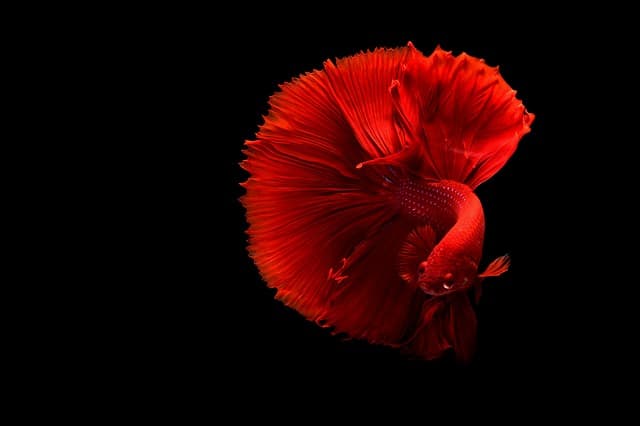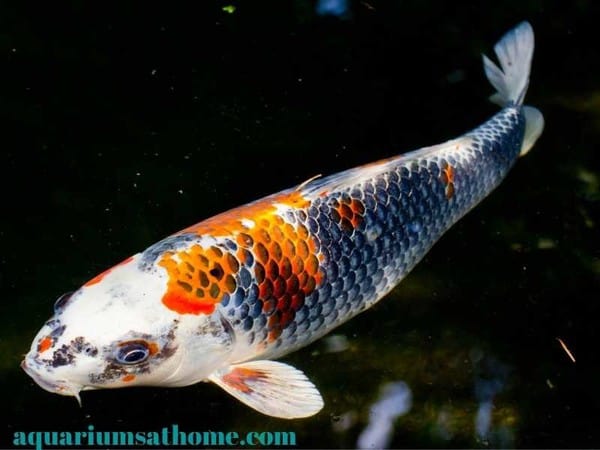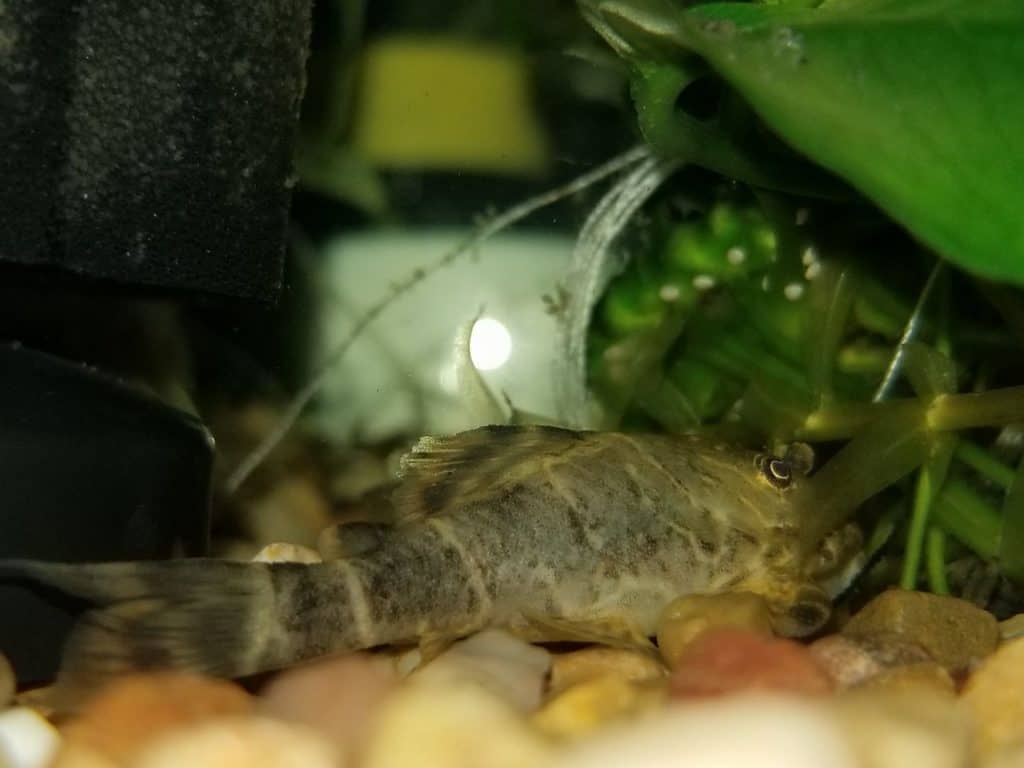Freshwater stingrays are much like sharks in that they’re soft-bodies and have flexible, cartilaginous skeletons rather than ‘hard’, mineralized bones. Intelligent and interactive with their keepers, these aquatic creatures are great for experienced hobbyists and make a unique addition to an extra-large home or office aquarium. But what do you need to survive in captivity – what tank setup is required?
To setup a freshwater stingray tank, begin with a 75- to 90-gallon tank for juveniles and upsize to at least a 180-gallon version once full-grown. You’ll also need water conditioner, a heater, a filter, a circulation pump, an aquarium light, and a siphon. Add fine substrate, some floating plants, and driftwood. If you add rocks, make sure they’re smooth. All decorations must be free of sharp edges.
Now that you know what it is you need for a freshwater stingray tank, let’s explore this topic together in more detail. We’ll learn about their natural habitat, what water conditions they require, what aquarium equipment is necessary, what they eat, how they behave, how many can be kept together, what types of decorations can used in their tank, and why keeping their aquatic environment clean is so important.
So, if you’re ready to learn more freshwater stingrays and how to properly care for them in captivity, then let’s begin!
How does the Natural Habitat of the Freshwater Stingray Affect Tank Setup?
Mimicking the natural habitat of the freshwater stingray is crucial to its survival in captivity. Since they’re found in warm, tropical waters in Africa, Asia, Australia, and South America, you’ll need a heater and an aquarium light.
With most of these fish come from the Amazon River, you’ll also need fine, soft substrate, some plants, a circulation pump, and a high-quality filter that replicates the fast-flowing, sandy bottomed, sparsely vegetated waters they’re accustomed to.
What Water Conditions are Best for Freshwater Stingrays?
Freshwater stingrays are highly sensitive to fluctuations in tank parameters. Therefore, stable water conditions and a clean aquatic environment are a must! Since they’re a type of tropical fish, they need warmer water – a temperature of 75- to 82-degrees Fahrenheit is recommended.
The pH level of a freshwater stingray tank should between 6.8 and 7.5 with an alkalinity reading of 18 to 70 ppm (parts per million). Ammonia levels should be at 0 and nitrite readings below 10ppm. Frequent water testing and partial water changes of 25 to 50% weekly are encouraged.
You can use RO water with a trace element restorer for a freshwater stingray tank or tap water treated with a water conditioning agent. I recommend API water conditioner, available in-store on online through aquarium retailers. Don’t add salt to the tank unless needed to boost immunity or treat disease.
How Big of a Tank do Freshwater Stingrays Need?
Since freshwater stingrays can reach a whopping 18 inches in diameter, the bigger the better when it comes to choosing a tank! Length is crucial for housing such a large aquatic species so the aquarium must be at least 72” to 84” wide.
For juvenile freshwater stingrays, you can start smaller with a 75- to 90-gallon tank but you must upsize to a much bigger version once they start to grow. Adults require a 180-gallon aquarium if they’re to thrive in captivity. If you’re not able to accommodate this, you should be prepared to rehome them.
Freshwater stingrays like to move about and forage along the substrate in their tank. Therefore, plenty of open space along the bottom is necessary for these aquatic creatures to be able to swim freely and bury themselves in the substrate.
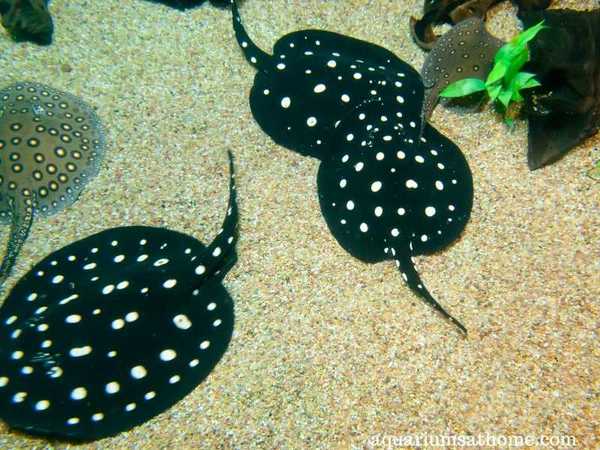
What Equipment is Necessary for a Freshwater Stingray Tank?
Freshwater stingrays are a type of tropical fish and as such, require a heater in their tank. Make sure it comes with a guard around it to prevent stingrays from burning themselves. You can also place it within a sump to further protect against injury.
An adjustable or full spectrum LED aquarium light is also needed for a freshwater stingray tank. Since this species tends to be more active at night, ensure the light comes with an ambient feature so you can observe them. Subdued lighting set on a 12-hour day/night cycle is recommended.
Freshwater stingrays grow to be quite large and therefore create a heavy bio load in an aquarium. That said, a high-quality canister filter is a must to help keep ammonia levels at bay and provide the proper biological, chemical, and mechanical filtration.
Because freshwater stingrays are typically found in high-flowing waters, adding an aquarium circulation pump is a good idea. Circulation pumps are designed to simulate the natural river currents this species is accustomed to in the wild and therefore, in my opinion, better than a powerhead.
What Decorations can be Used in a Freshwater Stingray Tank?
Freshwater stingrays have soft bodies made up mostly of cartilage. Therefore, you must be careful what types of decorations you use in their tank. Rocks with sharp edges can cause injury so its important to ensure everything you put in the tank has smooth surfaces.
Driftwood can be added to a freshwater stingray tank to help soften the water – opt for Brazilian driftwood, if possible. Tannins leaching into the water naturally from the wood aren’t harmful in this case but rather beneficial.
Freshwater stingrays like greenery in their aquarium. Plants that attach to rocks or driftwood like java fern and anubias are preferable. Floating silk plants are also a good choice. Don’t place vegetation directly into the substrate as the stingrays are likely to uproot them.
How Many Freshwater Stingrays can be Kept Together?
How many freshwater stingrays you keep depends upon the age of the fish and size of the tank. Also, if you plan to house other species with them, you’ll need to take that into consideration. Due to their sheer size, it’s typical to have just two at a time since they require 3 to 5 feet worth of floorspace each.
The height of a freshwater stingray tank isn’t as important as the width since this species likes to stick close to the bottom of the substrate in their tank. The length of the aquarium should be 72 to 84 inches and the width somewhere between 24 and 36 inches. Aim for a 180-gallon tank or bigger, if possible.
What do Freshwater Stingrays Like to Eat?
Freshwater stingrays are carnivorous and feast mainly on small fish and crustaceans in the wild. In captivity, they can be fed live blackworms and earthworms, frozen bloodworms, mysis shrimp, and white fish like tilapia. It’s important to spread out the food evenly so each ray gets an equal portion.
Sinking carnivore pellets (like the Hikari brand) are also possible food options for freshwater stingrays. This species in incredibly intelligent and likes to interactive with its human keepers. In fact, they can even be taught to take food out of their keeper’s hand with tweezers!
Final Thoughts
To conclude, setting up a freshwater stingray tank begins with a 75- to 90-gallon tank for juveniles. As rays grow, upsize to a 180-gallon or larger for adults. A heater, filter, circulation pump, siphon, and aquarium light are also required. Fine substrate and floating plants can be added along with smooth rocks and some driftwood. Make sure all decorations are free of sharp edges which can cause injury.
I hope you’ve found this article to be both interesting and informative. Thanks for reading and good luck with your aquarist hobby.
Recommended Posts
Pictus Catfish Care and Tank Setup (Tank Mates, Breeding, Behaviour)
Jack Dempsey Fish Care Guide (Species Profile, Aquarium Setup & Tankmates)
What Fish can Live with Freshwater Stingrays?



